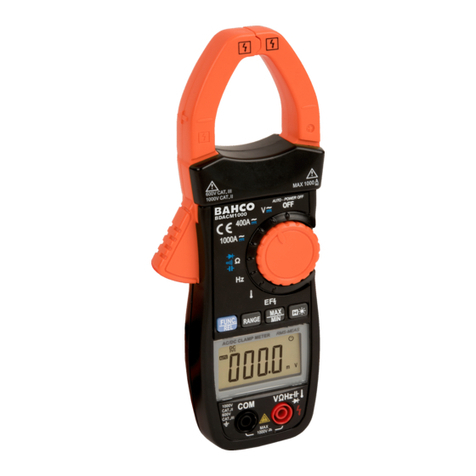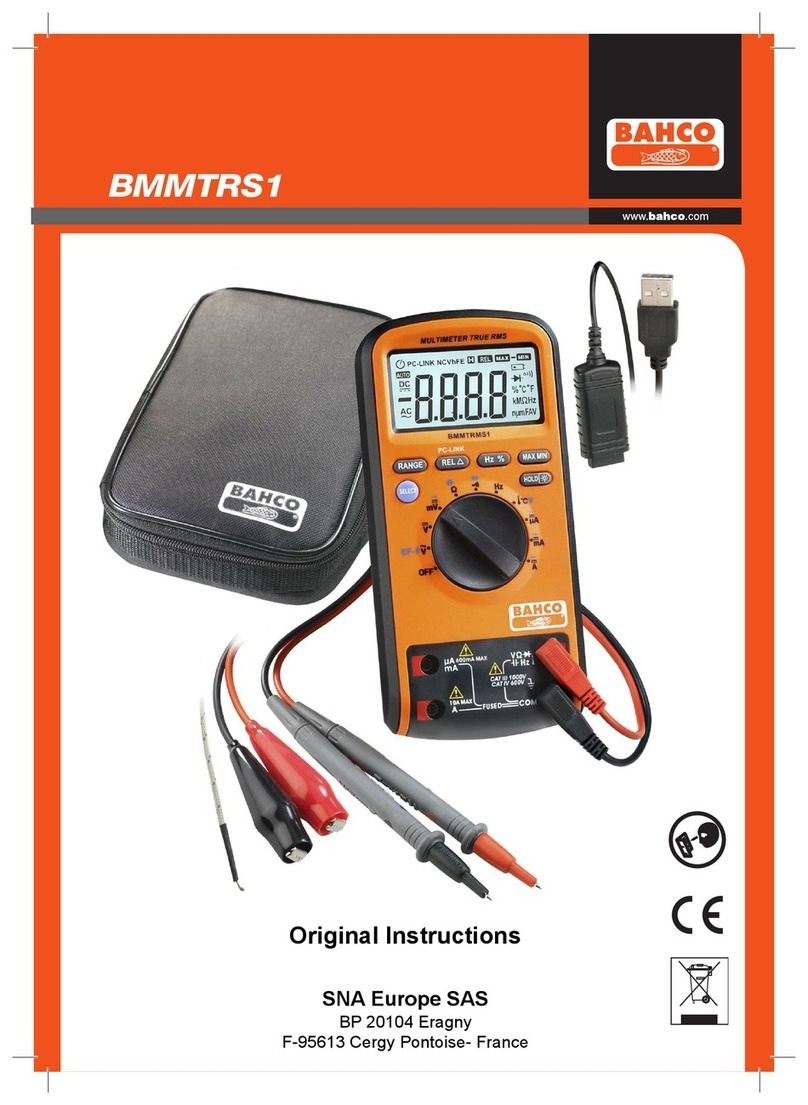
BDACM1000
4
1.1.2 During use
• If the device is used near noise generating equipment, the display may
become unstable or indicate large errors.
• Do not use the device or test leads if they appear to be damaged.
• Use the device only as specied in this manual, as otherwise the protection
provided by the device may be impaired.
• Use extreme caution when working near bare conductors or bus bars.
• Do not operate the device in the vicinity of an explosive gas, vapour or dust.
• Verify device operation by measuring a known voltage. Do not use the
device if it operates abnormally, as protection may be impaired. When in
doubt, have the device serviced.
• Uses the proper terminals, function and range for your measurements.
• If the magnitude of the quantity to be measured is unknown, initially set the
device to the highest possible range or, where possible, use the autorange
mode.
• To avoid damages to the device, do not exceed the maximum input values
shown in the technical specication tables.
• Do not touch unused terminals when the device is connected to a circuit
for measurement.
• Exercise caution when working with voltages above 60 VDC or 30 VAC RMS.
Such voltages pose a shock hazard.
• When using the probes, keep your ngers behind the nger guards.
• When making connections, connect the common (ground) test lead before
connecting the live test lead. When disconnecting, disconnect the live test
lead before disconnecting the common test lead.
• Before changing functions, disconnect the test leads from the circuit under
test.
• For all DC functions, including manual and autorange mode, rst use the AC
function to check for any AC voltage to avoid the risk of shock. Then select
a DC voltage range equal to or greater than the AC range.
• Switch off power to the circuit and discharge all high-voltage capacitors
before measuring resistance, continuity, diodes, or capacitance.
• Never make resistance or continuity measurements on live circuits.
• Before measuring current, check the device’s fuse and switch off power to
the circuit before connecting the device to the circuit.
• In TV repair work or when making measurements on power switching
circuits, remember that high transient voltages at the test points can
damage the device. Use a TV lter to attenuate any transients.
• Use only 3x AAA batteries, properly installed in the device’s battery case,
to power the device.
• Replace the battery when the battery low indicator (
) appears. With a
low battery, the device may show incorrect readings that can lead to electric
shock or personal injury.
• Do not measure voltages above 1000V in Category III installations or 600V
in Category IV installations.
• The “REL” symbol is displayed when the device is in Relative Measurement
mode. Exercise caution because hazardous voltages may be present.
• Do not operate the device with the case (or part of the case) opened or
removed.
1.2 Symbols
Symbols used in this manual and on the device:
Caution: Refer to the instruction manual. Incorrect use may result in
damage to the device or its components.
AC (alternating current)
DC (direct current)
AC or DC
Ground
Double insulated
Fuse
Conforms to European Union directives






























